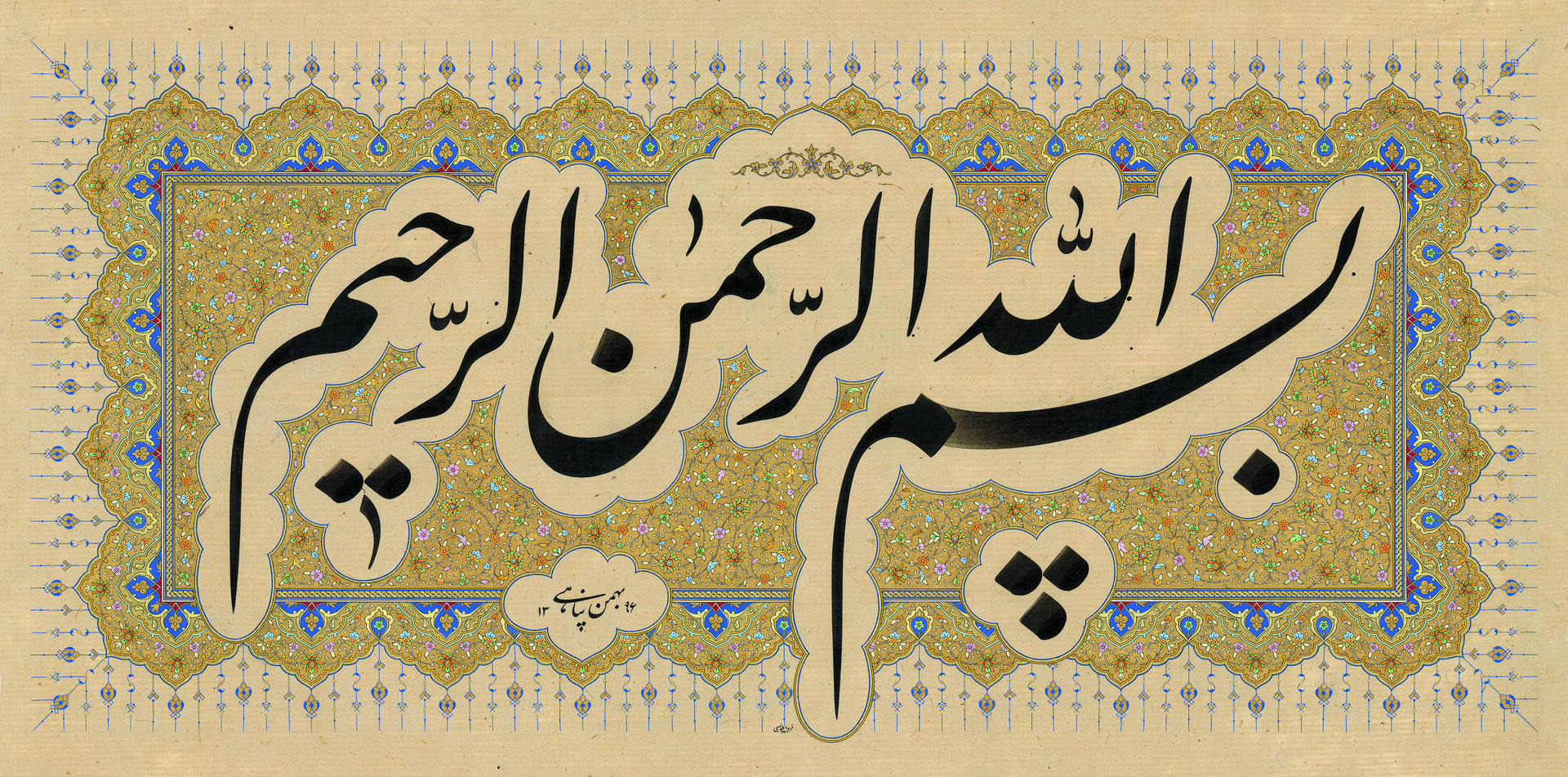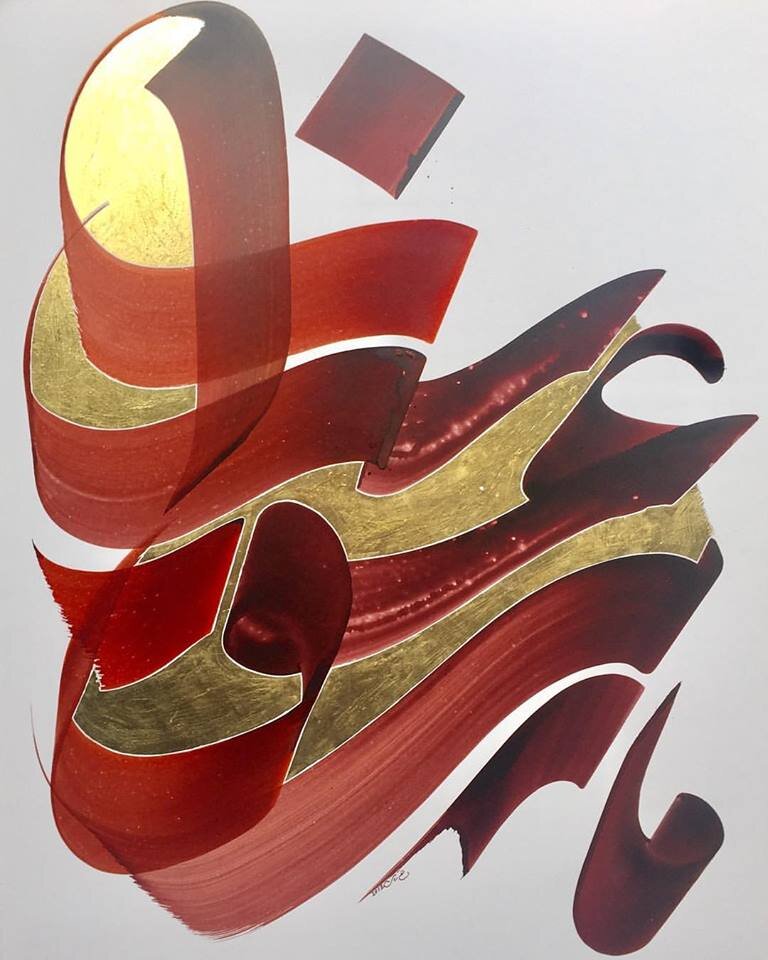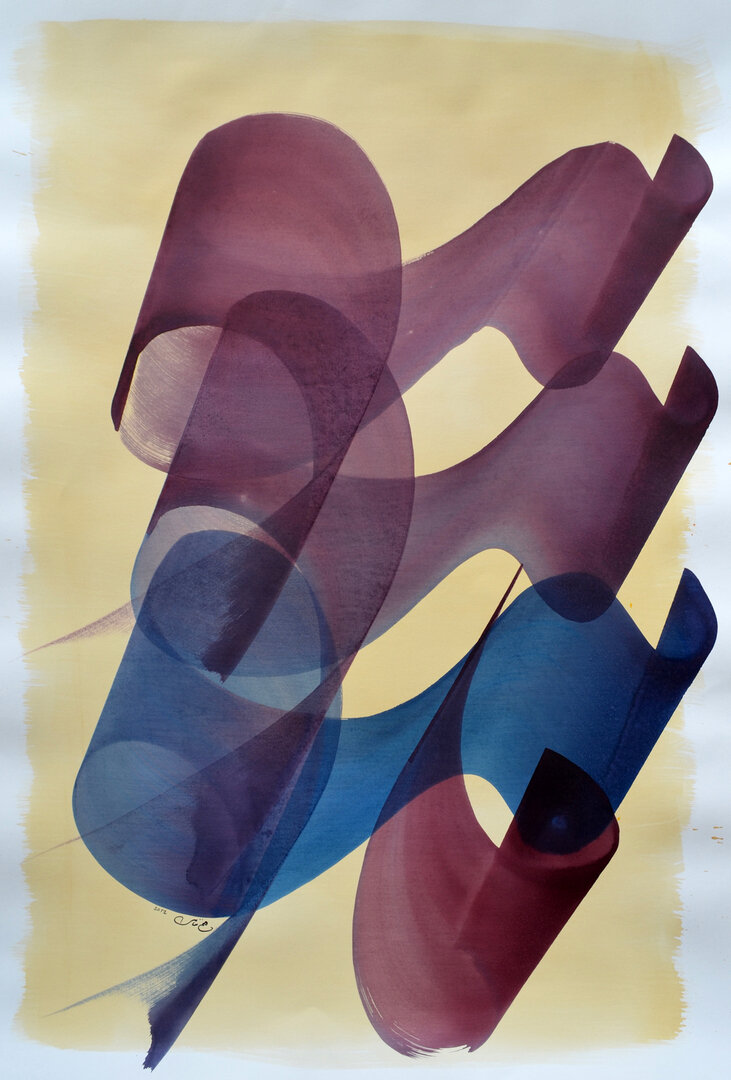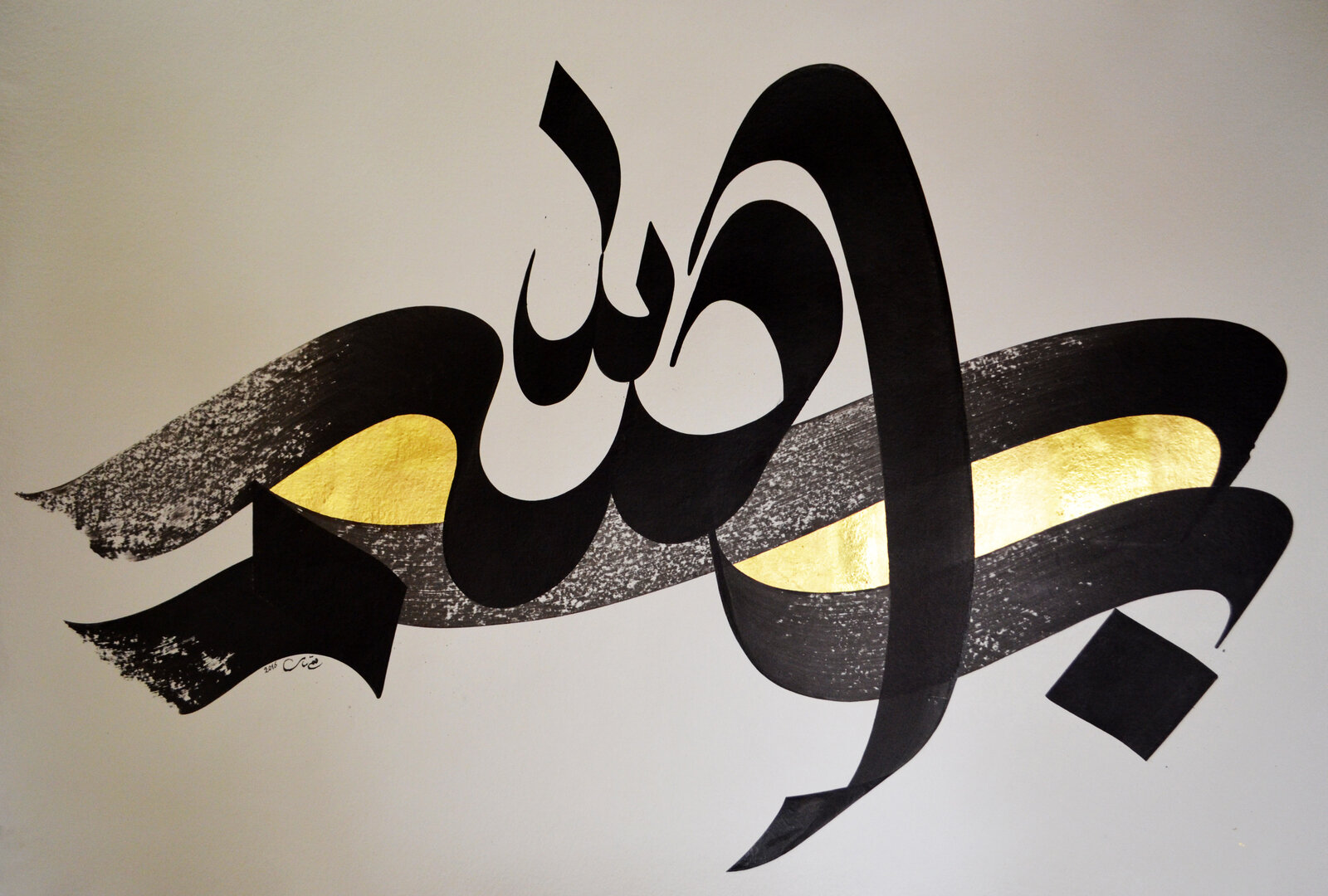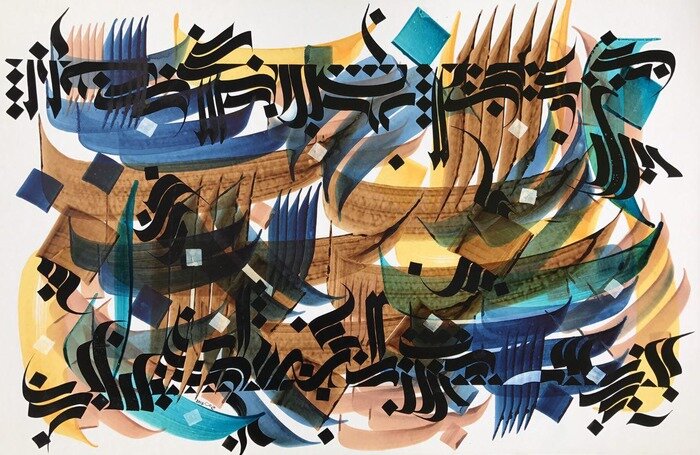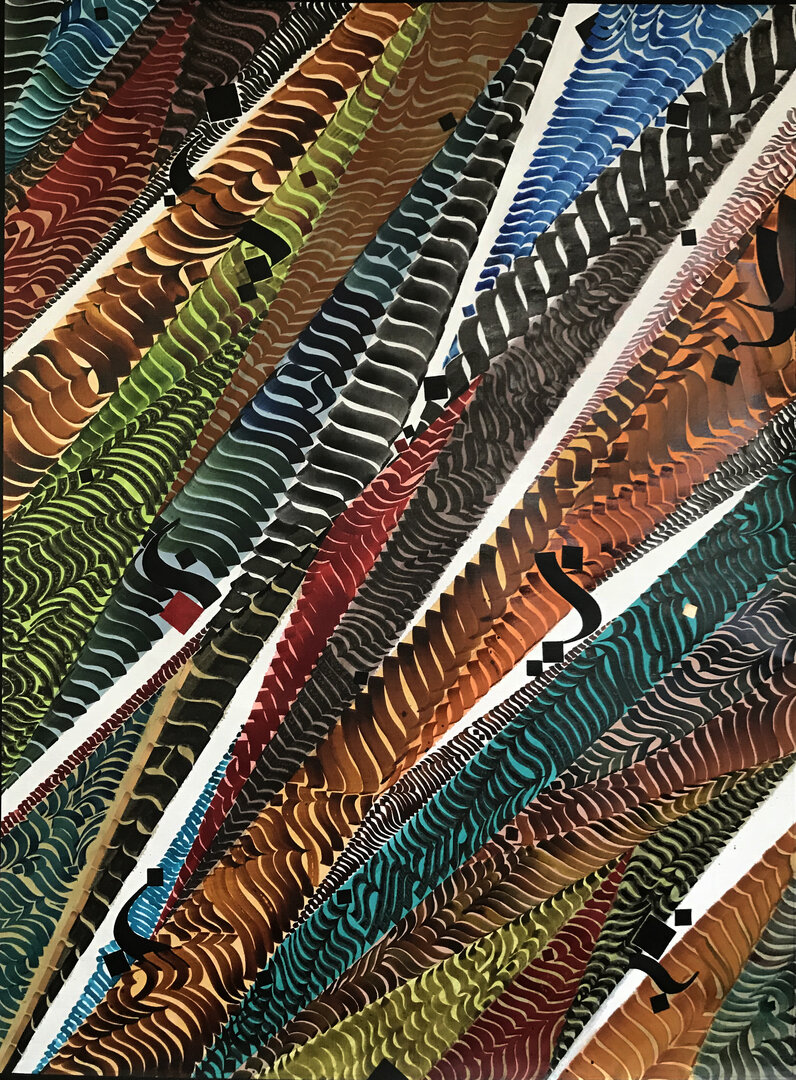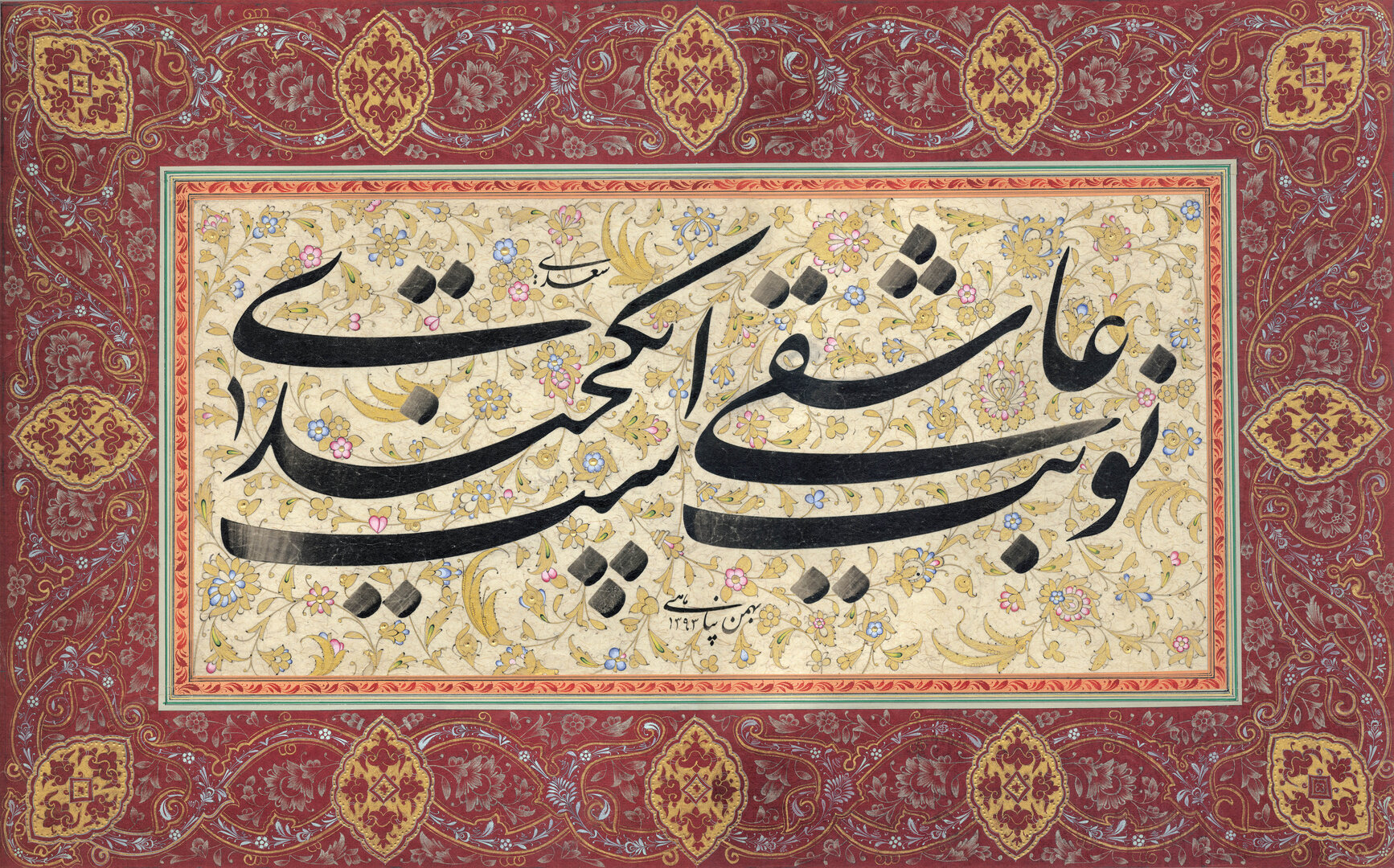Persian script calligraphy or Nasta’liq is one of the most revered art forms in Persian history and culture. Most probably invented by Mir Ali of Tabriz in the 14th or 15th century. It is a cursive script that is a combination of Naskh and Ta’liq styles and it’s often called the “Bridge of the Calligraphy Scripts.”
Unlike the Arabic scripts (Naskh, Thuluth, etc.), it follows naturals curves and provide more flexible movements featuring elongated horizontal strokes. And, also unlike Arabic script, it is never written with vowels except with rare occasional hamza or shadda. It can be written quickly and compactly, and is more stretched and curved in comparison.
Ustadh Bahman Panahi is one of the foremost practitioners of the Nasta’liq script. Also a successful musician, Panahi graduated from Faculty of Fine Arts at Tehran University and continued his studies in France at Ecole-des Beaux-arts, in Valanciennes and Sorbonne towards a PhD in Visual Arts.
Ustadh Bahman teaches, exhibits and performs all over the world including the U.S.
I had the great pleasure of asking him a few questions recently about his work and experience as an artist. Ustadh Bahman talked about his journey to this art and important advice for students in the traditional arts.
What inspired you to study traditional arts?
I grew up in a large family of 9 children and I was the 8th child, almost the last one. In our family, my brothers did a lot of artistic activity, such as theater, calligraphy and music. So I can say one of the reasons I got into music and calligraphy was because I was born in a very artistic family, and my brothers did it. But most importantly, I believe this a gift from God to me. I became interested in calligraphy very early in my life, almost around 4 years old. I was in love with the written words, letters and forms and etc. So, I believe my family situation helped a lot; my parents encouraged me. And today after many years of experience, I am sure it was a gift from God. During all these years, I couldn’t leave my artistic activity, and my love for the arts. Even though I traveled a lot and lived in different places, my life situations didn’t deter me from this path. I am happy and proud to contribute to this work.
You are a successful calligraphy artist and musician. Does one help with the other? How do you come up with your compositions?
Success requires work. The work in this path is eternal and infinite to achieve and be successful. I thank God and all the people who helped and encouraged me, my family, my friends and students. I studied and practiced calligraphy and music since I was of an young age, and these two arts grew with me.
Music and calligraphy help each other a lot. Music is in the calligraphy itself. It improves our visual understanding of the calligraphy; to listen to the art. And in calligraphy, a lot of musical elements can be seen in the letters and words, in points and lines. And of course they help each other. I do something called Musicalligraphy, which is combining music and calligraphy. These two together help you understand the words of calligraphy and feel it with more sensation. To me writing calligraphy is like playing or singing the music. When I am playing music it translates the melodies of calligraphy, the composition and the movement of the letters.
What is the best advice your teacher gave you?
When I was 15 years old I asked my great master Ustadh Gholam Hussein Amirkhani to give me advice. He wrote down the advice in calligraphy and I still preserved it till now with a lot of love; “Be always good and wish always good things for everybody.” This was a very important and essential advice that I learned from him. Apart from that I learned many other lessons from my masters about calligraphy and life. Such as to be in balance, to be in peace with myself. Because you will only progress in calligraphy if you improve your own self. A very common and important lesson is the balance and beauty in calligraphy comes from a bright and clean soul of the calligrapher. Therefore, everything in the world should start with oneself. I learned this both directly and indirectly through my masters, especially from my teacher Ustadh Gholam Hussein Amirkhani and also my second teacher Ustadh Abdullah. My teachers have taught me that success in calligraphy is absolutely related and connected to their being, soul and character. So, it was a very important lesson for me to work on myself and then my art. Because the art in any domain, if it not the real reflection of the artist, cannot communicate and transfer to the audience’s souls or to other arts.
What is your advice for students in the traditional arts?
It’s difficult to give advice when the advice is not direct it won’t be deep and efficient. The students who work with masters, they should be more attentive to the overall lessons of the master not just techniques, materials. It takes a lot of time, love, patience and energy. For the students of traditional art, they should try to understand the philosophy and essence of the arts, which has a vast knowledge and history. So, first they should understand the specifications of the tradition. Then secondly, how the traditional art can bring us to polish and promote our expression into the artistic field and path. Traditional art is the base. We should learn different aspects of traditional art to appreciate it more and to love it completely. Like a diamond, you need to polish all the surfaces to give you the brightest light. This is my advice to the students and to myself.
For more information on Ustadh Bahman’s work, please visit his Instagram Page (@bahmanpanahi.art) and website; http://www.bahmanpanahi.com/
References:
http://www.iranicaonline.org/articles/calligraphy
